The rise and fall of the Northern Fujiwara family
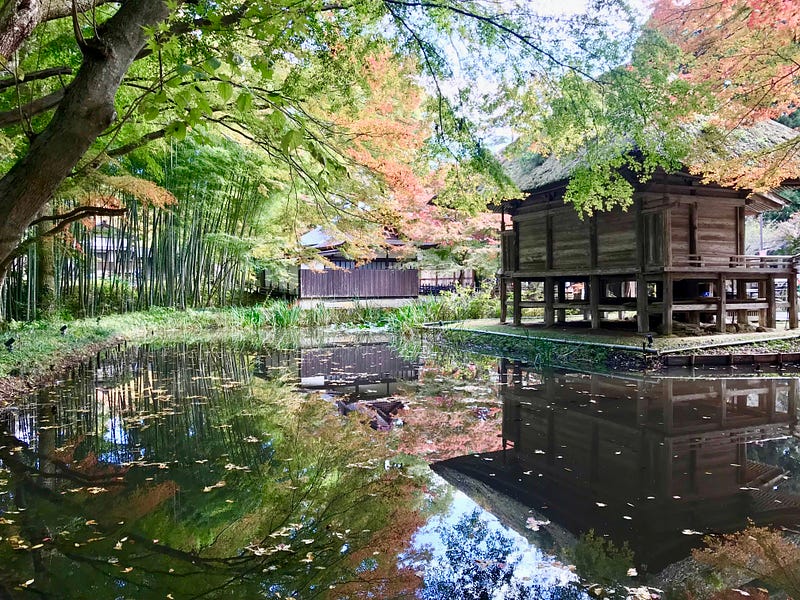
Three generations of glory
Vanished
In the space of a dream
So wrote Japan’s most famous Haiku poet, Matsuo Basho, upon visiting Hiraizumi in 1689.
Located in Iwate Prefecture, Hiraizumi is a place you may never have heard of. But it was once the capital of northern Japan, rivaling Kyoto for size, splendor, and wealth.
The famed explorer Marco Polo described what he heard about it while in China:
They have gold in the greatest abundance, its sources being inexhaustible… The entire roof [of the sovereign’s palace] is covered with a plating of gold… The ceilings of the halls are of the same precious metal; many of the apartments have small tables of pure gold, of considerable thickness; and the windows also have golden ornaments. So vast, indeed, are the riches of the palace, that it is impossible to convey an idea of them. — The travels of Marco Polo, written 1300
This marvelous city of gold was founded by a member of the powerful Fujiwara clan, whose daughters married emperors and influenced the government in Kyoto for generations. The branch of the family that ruled in Hiraizumi is known as the Northern Fujiwara.
In order to appreciate the magnitude of what Hiraizumi once was, we need a little history.
Setting the stage
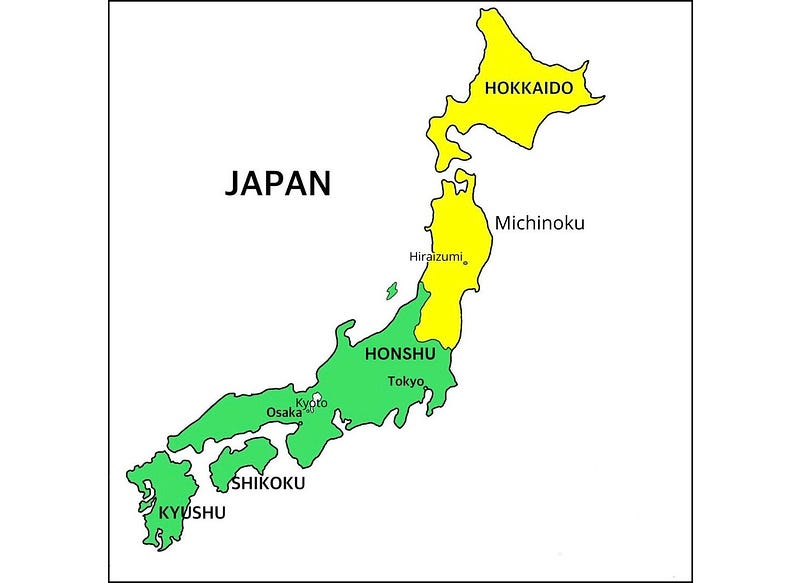
During the Heian Era (794–1185), the emperor in Kyoto ruled the area from southern Kyushu to the southern border of what now is Fukushima Prefecture. (Shown in green on the map.)
Northern Honshu was referred to as Michinoku, “beyond the road.” It was considered wild country, the home of Emishi “barbarians.”
Understood to have migrated from northeastern Asia, the Emishi were ethnically different from the main population of Japan. Historians theorize the name is a collective term for the various northern tribes who resisted the rule of the Japanese state. Some of the Emishi are likely the ancestors of the Ainu people, today considered the indigenous people of Hokkaido.
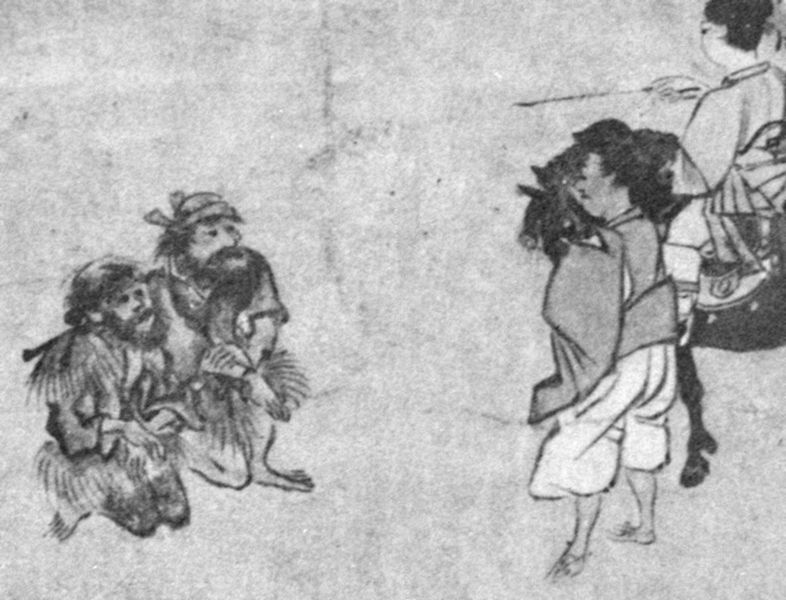
During the 12th century, the Emishi of northeastern Honshu were ruled over by a powerful and wealthy family, the Abe.
Like the Kumaso and Hayato, “barbarian” people of southern Kyushu before them, the Emishi were expected to pay tribute to the court. And just like their southern counterparts, this task became so onerous that they stopped.
Because of this failure to pay tribute, Minamoto no Yoriyoshi, as Chinjufu-shōgun, “Defender of the North,” was tasked with subjugating the Emishi Abe clan. He received reinforcements from Kiyohara no Takehira, the leader of nearby Dewa Province.
A relative of the Kyoto Fujiwara family, Fujiwara no Tsunekiyo, who had married an Emishi and moved to the hinterland, joined the Abe clan in their defense of Michinoku.
After fighting that spanned 12 long years, the powerful Minamoto and Kiyohara allies defeated the Abe clan and Fujiwara no Tsunekiyo, who, because of his Kyoto roots, was considered a despicable traitor to the emperor.
Minamoto no Yoriyoshi, the Chinjufu-shōgun, personally exacted revenge on Tsunekiyo by publicly decapitating him — using a blunt and rusty sword to prolong the agony.
Fujiwara no Tsunekiyo left behind his Emishi wife and their son, and it is to this son that we now look.
Fujiwara no Kiyohira — the first of the Northern Fujiwara
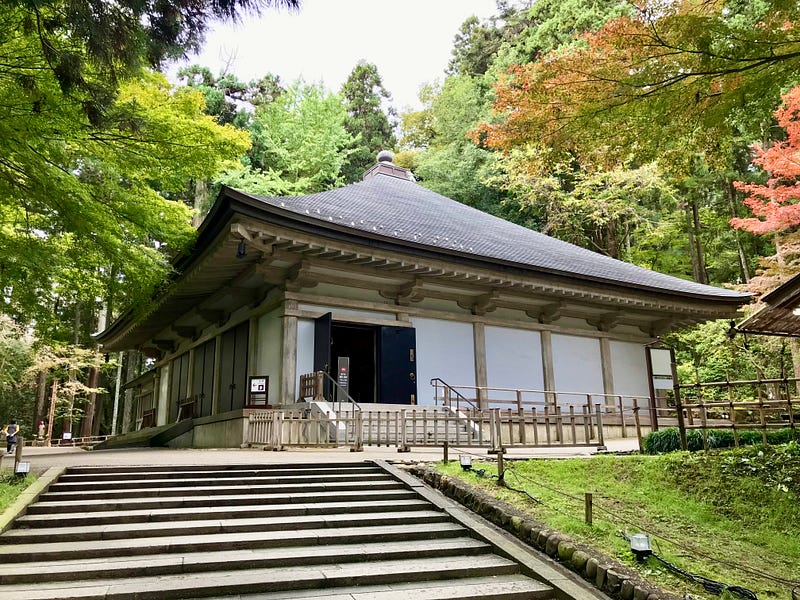
Fujiwara no Kiyohira’s Emishi mother was taken as a concubine by one of the victors in the war, Kiyohara no Takehira, who had been named the new Chinjufu-shōgun.
Kiyohira’s grandfather, father, and uncle had all been killed in the war. His mother’s Emishi brothers were banished to Kyushu. He was raised in a strange land in the house of his father’s enemy.
When he was 28, he found himself embroiled in another war, a vicious power struggle among his adopted family as to who would be the next to rule. Kiyohira emerged victorious, although he lost his wife and son who were viciously killed in their home by his younger half-brother.
With a heavy heart at such a tragic loss, this son of a Fujiwara and an Emishi became the next Chinjufu-shōgun, Defender of the North, ruler of the vast northern Michinoku frontiers — a land rich in gold, silver, and fine horses.
Kiyohira, whose entire life had been beset by violence, resolved to use his power to bring peace to Michinoku by turning it into a Buddhist realm.
In 1105 he moved to Hiraizumi and rebuilt Chūson-ji, 中尊寺, a temple that had been established by a Tendai Buddhist monk in 850. He wished for a Buddhist sanctuary where all people could be welcome, and he had Chūson-ji rebuilt as a place for the repose of the spirits of all those lost in the recent wars, regardless of loyalties or status.
He built Daichojuin, 大長寿院, a 15-meter-high temple that housed a 9-meter golden statue of Amida Nyōrai, the Buddha of the Pure Land. Some years later, when Japan’s first shogun, Minamoto no Yoritomo, saw Daichojuin, he was so impressed with its grandeur that he modeled Yofuku-ji temple in his capital of Kamakura after it.
Among the over 40 Buddhist temples and pagodas that Kiyohira had built, only one remains today.
It is the Konjikidō, 金色堂, Golden Hall, which was built to house a gold statue of Amida Nyōrai. Not only are the statue and altar decorations made of gold, but both the temple’s interior and exterior walls are covered with gold leaf. The pillars, altars, and beams are inlaid with jewels and mother-of-pearl, have engraved gold fittings, and are covered with makie — black lacquer sprinkled with powdered gold.
The entire temple is a glorious work of late Heian-era artistry. Today, it is housed within a protective concrete building. No photos are allowed to be taken within its walls.
When Kiyohira died in 1128, he was succeeded by his son Motohira.
Fujiwara no Motohira — the second Northern Fujiwara
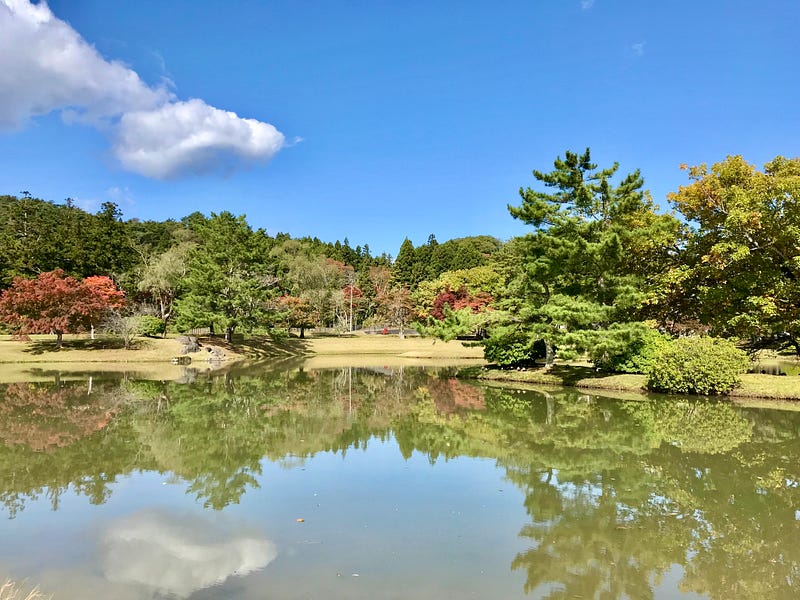
As well as continuing his father’s work of expanding the Chūson-ji temple complex, Motohira also built the nearby Mōtsū-ji, 毛越寺, temple and its gardens, said to have even surpassed Chūson-ji for size and splendor.
The main hall was constructed of precious wood overlaid with gold and silver and inlaid with jewels and mother-of-pearl. It held an enormous statue of Yakushi Nyōrai, the Healing Buddha, surrounded by the Twelve Heavenly Generals, protective deities — all realistically carved with crystal eyes, the latest innovation. These statues were created by the master sculptor, Unkei.
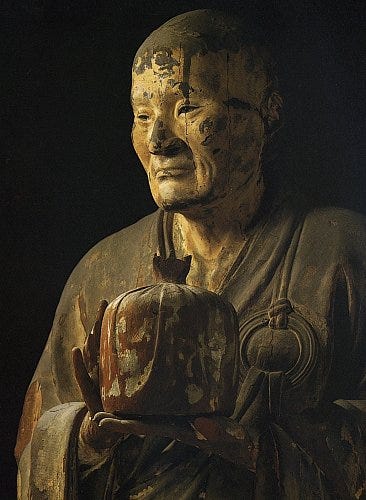
Amid the temples of Mōtsū-ji was a Pure Land Garden — the only part of the once-breathtaking temple complex that remains to this day.
The garden is centered on a pond and was created in the classic Heian style. It includes a magatama jewel-shaped island, peninsulas, rocky coastlines, bridges, mountain-like boulders, and a feeder stream. All these elements are in accord with Japan’s oldest garden manual, the Sakuteiki, 作庭記, “Records of Garden Making,” dating from the 11th century. Its beauty remains unchanged.
Motohira died in 1157 and was succeeded by his son, Fujiwara no Hidehira.
Fujiwara no Hidehira — the third Northern Fujiwara
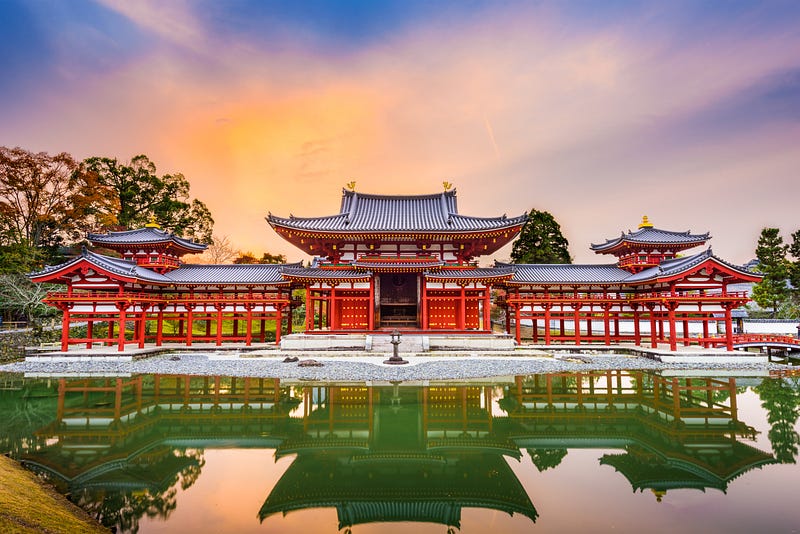
Hidehira constructed the elaborate Muryōkō-in, 無量光院, modeled after the Phoenix Hall of the Byōdō-in, 平等院, just south of Kyoto. His temple in Hiraizumi, though, was said to be larger and far more grand.
Although things were peaceful in Hiraizumi, it was not the case in Kyoto. The power of the emperor was waning, the Taira and Minamoto samurai clans were growing strong and feuding, and there was great unrest in the capital.
After the first major skirmish, the victorious Taira killed the Minamoto leader and banished his sons. Young Minamoto no Yoshitsune, at age 10, ended up in a temple on Mount Hiei, where he studied Buddhism, swordsmanship, and strategy. His older half-brother, Yoritomo, was exiled to Izu (in Shizuoka). A third brother disappeared from the historical record until many years later.
In 1174, Minamoto no Yoshitsune, age 15, left the temple and traveled to Hiraizumi where he came under the protection of the Chinjufu-shōgun, Fujiwara no Hidehira.
This seemingly small act of sheltering Yoshitsune turned out to be the spark that would lead to the downfall of the Northern Fujiwara and the eventual destruction of the architectural and artistic treasures of Hiraizumi.
The Genpei War and its aftermath
In 1180, word came that Prince Mochihito, fearing the power of the Taira clan, had asked the Minamoto clan to gather forces against them. Yoshitsune left at once for Kyoto where he joined his older half-brother, Minamoto no Yoritomo, in what came to be called the Genpei War.
This five-year epic war of the Minamoto against the Taira is filled with dramatic tales of tragedy and heroism and has become the subject of countless ballads and kabuki plays. Far too long a story to tell here.
Yoshitsune had become an expert swordsman during his years on Mount Hiei and then excelled in horsemanship in the land of the Northern Fujiwara. With his skills and cunning, Yoshitsune emerged from the Genpei War a victorious general, well-known and loved for his legendary heroics.
Although Yoshitsune was rewarded with lands and honors by retired Emperor Go-Shirakawa, his jealous and suspicious older half-brother Yoritomo revoked them and instead tried to kill Yoshitsune.
Again, Yoshitsune sought refuge in Hiraizumi, along with his pregnant wife and his valiant friend and protector, the warrior monk, Benkei.
Two years later, in 1187, Fujiwara no Hidehira died. Before his death, he entrusted Yoshitsune’s protection to his son, Fujiwara no Yasuhira.
Fujiwara no Yasuhira — the final Northern Fujiwara
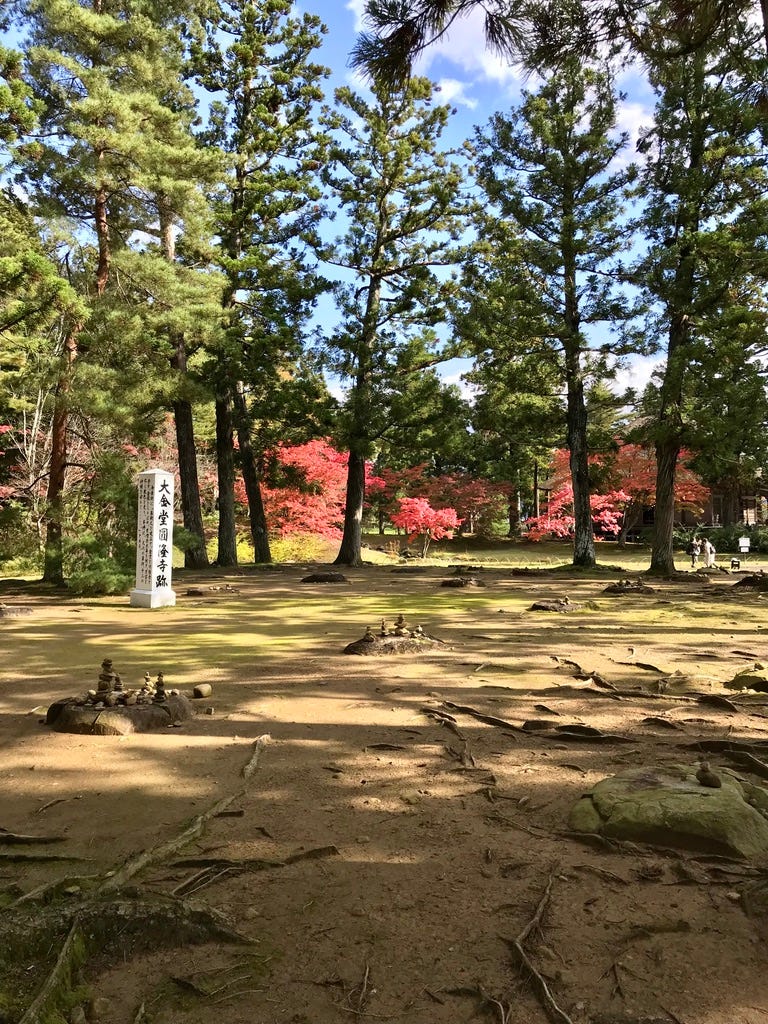
After his victory in the Genpei War, Yoshitsune’s older half-brother, Minamoto no Yoritomo, became Japan’s first shogun. He established his capital in the natural fortress of Kamakura, just south of present-day Tokyo.
Although firmly entrenched in power, Yoritomo was still suspicious of his younger brother. He sent word to Fujiwara no Yasuhira to have him killed.
At first, Yasuhira resisted, but his fear of Yoritomo prevailed. His soldiers surrounded Yoshitsune’s estate, his archers killed the noble Benkei, and Yoshitsune, along with his wife and child, chose suicide rather than be captured.
Yoshitsune’s head was sent to Yoritomo, yet his death and that of his household were not enough to appease the shogun.
For the “crime” of sheltering his younger half-brother, the shogun Minamoto no Yoritomo sent forces after Yasuhira who pursued him all the way to Hokkaido. The shogun’s samurai beheaded Yasuhira, packed his head in sake, and sent it to Kamakura.
Yoritomo had Yasuhira’s head displayed publicly, like that of the worst criminals. Afterward, it was packed in a bucket and returned to Hiraizumi.
Today, Yasuhira’s head, along with the mummies of Kiyohira, Motohira, and Hidehira, are preserved within the golden Konjikidō of the Chūson-ji temple.
Lotus seeds found in the bucket in which Yasuhira’s head was sent have been planted and now bloom each year behind Chūson-ji, a fitting reminder of the glories of the peaceful Buddhist land that Kiyohira had tried to create.
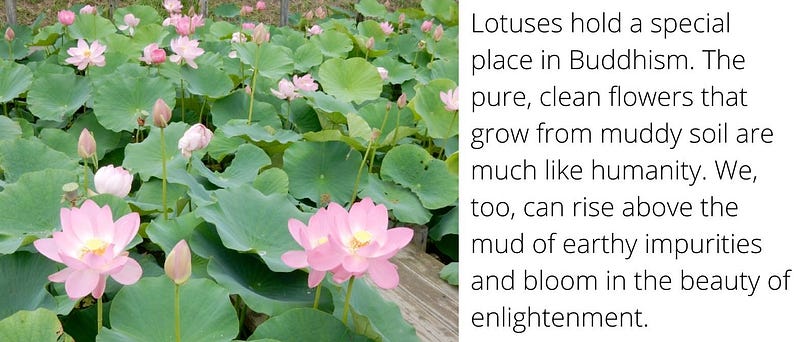
The remains of the magnificent structures built by the Northern Fujiwara, as well as Chūson-ji temple, are included in the UNESCO heritage site, “Hiraizumi — Temples, Gardens and Archaeological Sites Representing the Buddhist Pure Land.”
Although Hiraizumi is off the beaten track, it is well worth a visit to have a glimpse of the fantastic glories of its bygone years.
Sources:
https://www.motsuji.or.jp/, https://hiraizumi.or.jp/index.html, 前九年の役, 前九年・後三年の役, 藤原泰衡, UNESCO website.
If you have questions about Japan or suggestions for articles, please add them in the comments. For more photos and information on Japan, follow me on instagram at: https://www.instagram.com/more_than_tokyo/




